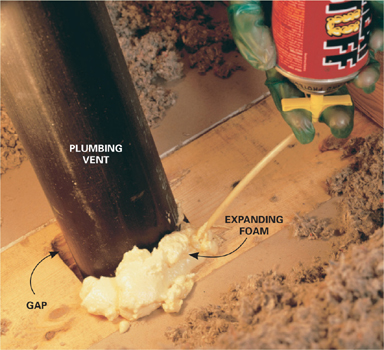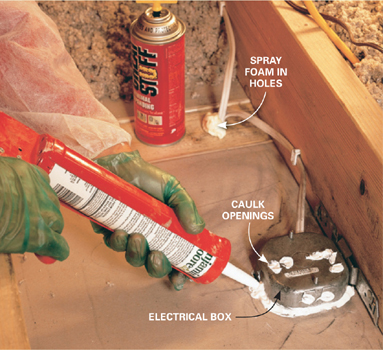No. 13
Cut heating costs
Little air leaks can lead to big heating bills
Major upgrades like more insulation or a new furnace can pay off in energy savings. But in most homes, especially older ones, sealing air leaks is the easiest, most efficient place to start. Plus, sealing leaks makes your home more comfortable and cuts cooling bills.
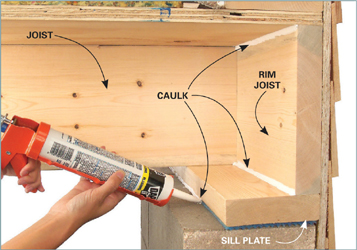
Seal basement air leaks
Sill plates and rim joists are usually poorly insulated (if at all) and very leaky. So if you have an unfinished basement, grab some silicone or acrylic latex caulk to seal the sill plate. If you simply have fiberglass insulation stuffed against the rim joist, pull it out. Run a bead of caulk between the edge of the sill plate and the top of the foundation wall. Use expanding foam for gaps larger than 1/4 in.
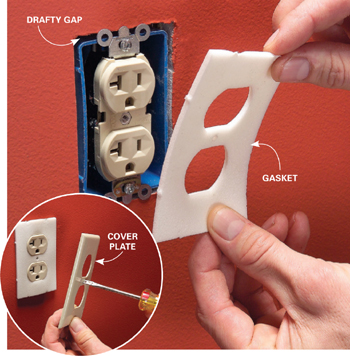
Seal electrical boxes
Electrical boxes that hold switches or outlets are major sources of heat loss. Foam gaskets may not completely seal the boxes, but they’ll help. They’re quick to install—just take off the cover plate, stick the gasket over the box, then put the plate back on.
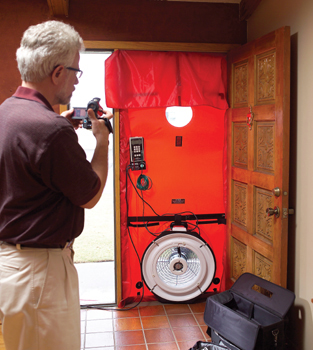
Get an energy audit
An energy audit includes a series of tests, including a blower door test that measures the overall leakiness of your house. On the basis of the test results, the auditor will recommend improvements and estimate the costs and savings. Audits take two to three hours and cost $250 to $400. If you set one up through your utility company, you might get one at a lower cost or a rebate.
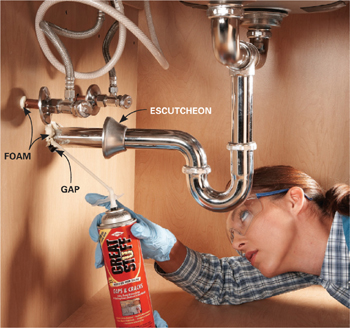
Fill gaps under sinks
Pull back the escutcheons where pipes enter exterior walls and you’ll probably see generous gaps around the pipes. Use expanding foam to seal those gaps. Shake the can vigorously, then squirt the foam around the pipes inside the wall. Don’t completely fill the gap—the foam will expand.
Stop fireplace heat loss
Wood-burning fireplaces can warm up a room, but more often, they rob a house of heat by letting it escape up the chimney. If you have a modern fireplace with a cold air intake from outside, make sure you equip it with an airtight door. If you have an older fireplace that uses room air for combustion, equip it with a door that has operable vents. And only keep those vents open when you have a fire in the fireplace. Otherwise, heat will constantly be sucked out of the house.
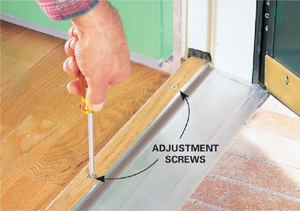
Stop leaks under doors
If you can feel the breeze or see daylight under your entry door, that’s bad news. The good news is that most thresholds adjust up or down just by turning a few screws. Turn all of the screws equally until the door opens and closes without much drag and any draft is eliminated.
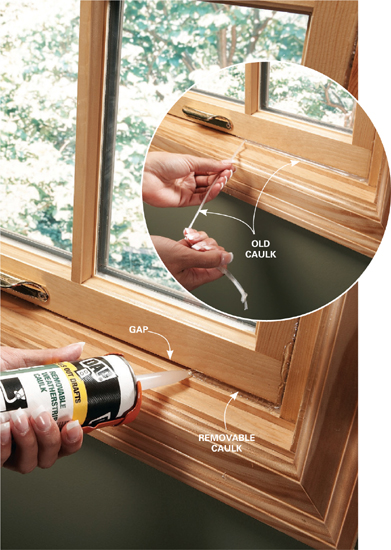
Seal windows with removable caulk
Leaky windows lead to major energy loss in a typical home. A quick, low-cost solution is to seal the gaps with removable caulk. Just apply the caulk over gaps and pull it off in the spring. Clean off any residue with mineral spirits.
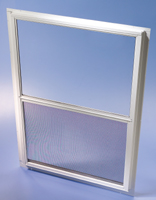
Consider new storm windows
Storm windows aren’t new, but they’ve definitely improved over the years: New ones open and close and can be left on year-round. Some offer low-emissivity coatings to further cut heat loss. You’ll see the biggest payback when they’re used over single-pane windows. But don’t use storm windows over aluminum windows—heat buildup between the two windows can damage the aluminum, and drilling holes for installation can cause leaks.
Will new windows pay off?
Replacing your old leakers with new windows will lower your heating bills. But in most homes, the energy savings alone won’t justify the high up-front costs. Other factors, like appearance, draft-stopping and easy operation, are usually better reasons to replace windows.
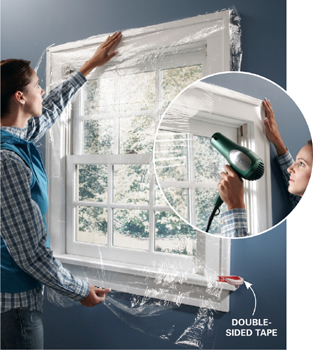
Cover windows with plastic film
Plastic window film seals air leaks, reduces window condensation and can be used with curtains or blinds. Exterior or interior window film kits are available at home centers.
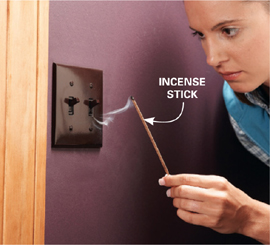
Low-tech leak detection
Locating air leaks can be tricky, but here’s a clever way to find them. Close all the windows in the house, turn off fans and the furnace. Light some incense and walk slowly around the outer walls of the house. The smoke will tell where air is leaking in or out.
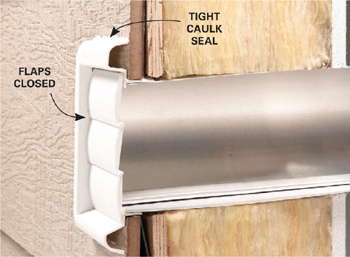
Check the dryer vent
If cold air comes in through your dryer vent, check outside where the vent goes through the wall. The vent should have a flap (or flaps) at the end to stop air infiltration. Make sure the flap closes and isn’t stuck open. If the flap doesn’t close on its own, replace it. If the flap works well, check the caulking. If it’s cracking and peeling away, it’s probably allowing air to leak in. Cut away the old caulking and apply new caulk.
The ultimate air-sealing job: attic leaks
Crawling around your attic and wallowing in insulation is a big, ugly job. But in many homes, airflow through ceilings into the attic is the biggest source of heat loss. So if you’re really determined to tighten your home, get up there and seal those leaks! Most leaks occur where the chimneys and electrical and plumbing lines pass through the ceiling. Although the attic is a nasty place to work, plugging these leaks is simple—mostly caulking and foaming gaps.
